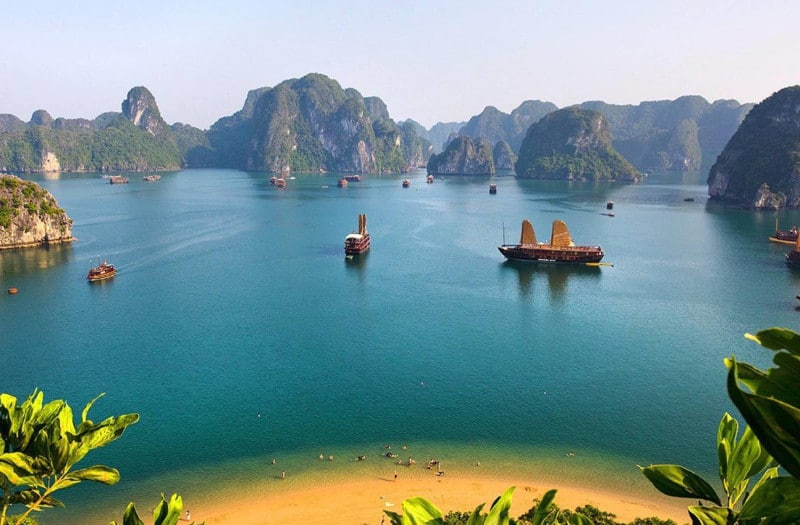
Ha Long Bay Facts
- Without question in the minds of those who know if it, the world renowned site known as Ha Long Bay forms an incredibly beautiful and picturesque location. This marvel of Nature further formed in an area already known for its great natural beauty.
- That’s because this wonder formed in what now constitutes the Quang Ninh Province, of Vietnam, in Asia. Completely understandably, furthermore, its majestic beauty garnered it countless awards and appreciation from people around the world.
- In fact, UNESCO also designated this astonishing marvel of Nature as a World Heritage Site in 1994. Its nature also makes it one of the most frequently visited works of Nature in its region of the world. That, though, makes it vulnerable in some ways.
- As is often the case, however, all this beauty did not just appear overnight. Fabulous Ha Long Bay formed slowly over a period of many millions of years. This incredible formation also occurred due to a very specific combination of several natural processes.
- These impressive processes included geological activity and erosion, including both wind and water. The magnificent site also remains renowned for its array of columns, karsts, and islets. Most of these primarily formed from soft local limestone.
Related Articles
Ha Long Bay Geology
Magnificent Ha Long Bay also boasts some very impressive measurements, in addition to its breathtaking beauty and undeniable charm. For one, the location actually covers quite a bit of area. In fact, the site includes an area measuring roughly 600 sq mi (1,553 sq km).
This already impressive statistic also includes a breathtaking coastline totaling about 74.5 mi (120 km) in length. Within the confines of the bay also stands yet more wonders to be appreciated. These marvels further include approximately 2,000 small islands and karsts.
The majority of these incredible formations, not surprisingly, mainly consist of limestone. The greatest percentage of these also appear as monolithic in shape. Incredibly, though, several of the larger karsts and islands of Ha Long Bay also formed as essentially hollow.
Yet the mind-boggling wonders do not stop there. Many of these also contain extensive caves! Two of the islets have enough area to support small, permanent populations. Many of the smaller islands also possess comparatively large beaches along their perimeters.
Ha Long Bay Climate and Endemic Species
With seemingly no end of the marvels in sight, the wonders of stunning Ha Long Bay even extend to its climate. For the most part, this aspect of the location remains considered distinctly tropical. This further comes with the presence of only two distinct seasons.
Summer remains moist and hot, while winter grows rather cold. Annual rainfall amounts additionally average around 78 in (2 m) in total. Further adding to the splendor of this tiny and remote part of the world, most of the karsts have a covering of thick vegetation.
The great majority of the islets within the confines of the magnificent bay also boast extensive quantities of vegetation. A total of 14 recognized endemic species of flora also live across the islets and karsts of Ha Long Bay. This makes it of supreme ecological importance.
Understandably, wildlife continues to be abundant within the region. In fact, officials count a total of 60 known species of endemic fauna residing within the confines of the bay. Much of the highly unique ecology of the bay now qualifies as threatened by increasing tourism.
Features Sharing Its Region
Check out our other articles on 7 Supremely Scintillating Cnidaria, Oilbird, Onyx River, Ascension Island Parsley Fern, Chinese Giant Salamander, Giant Mesquite Bug, Plumed Basilisk
